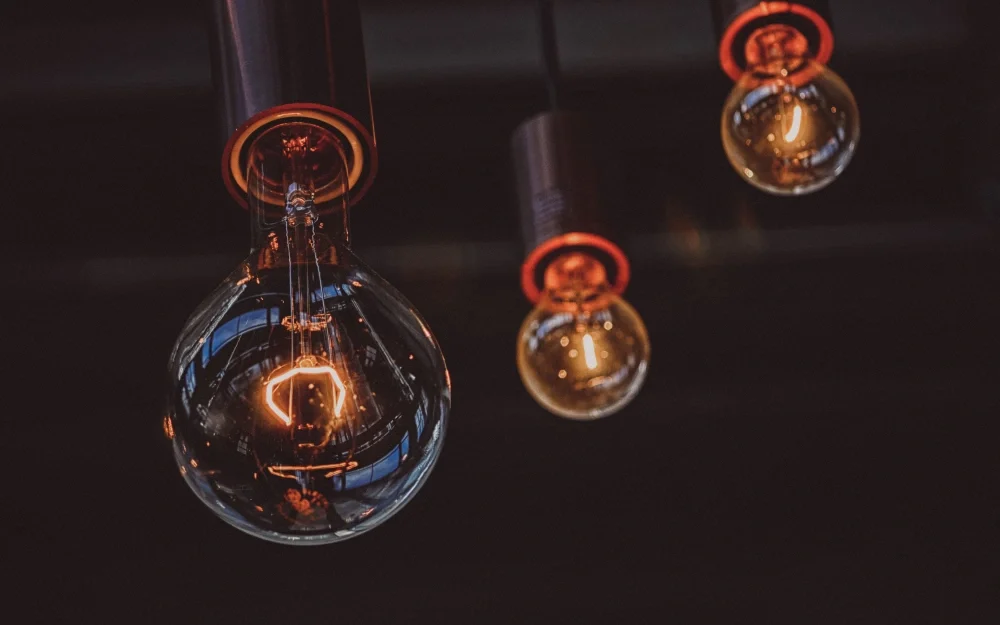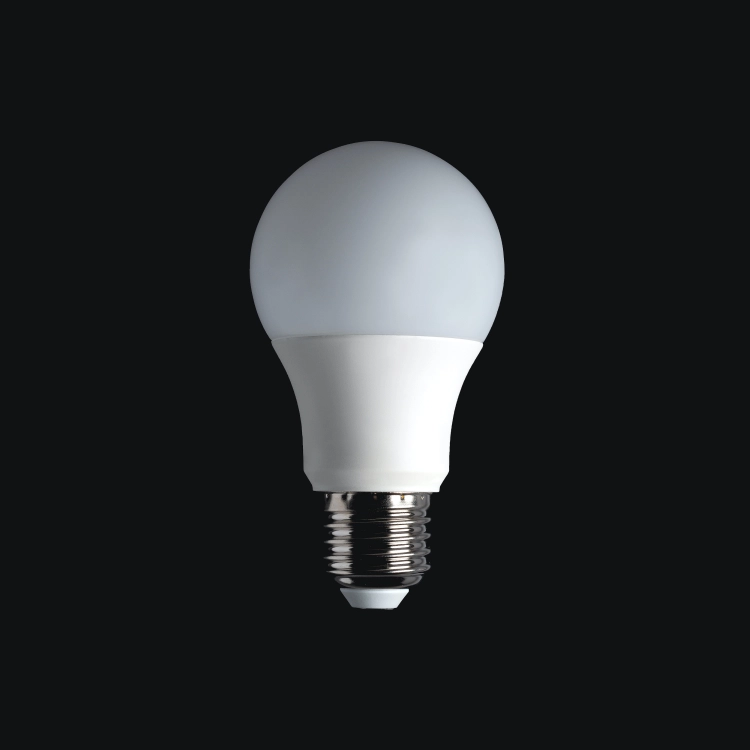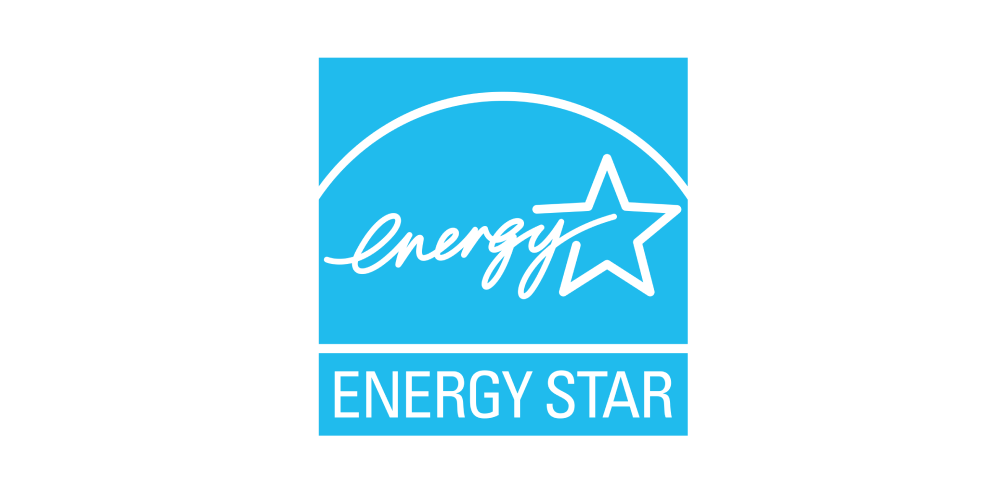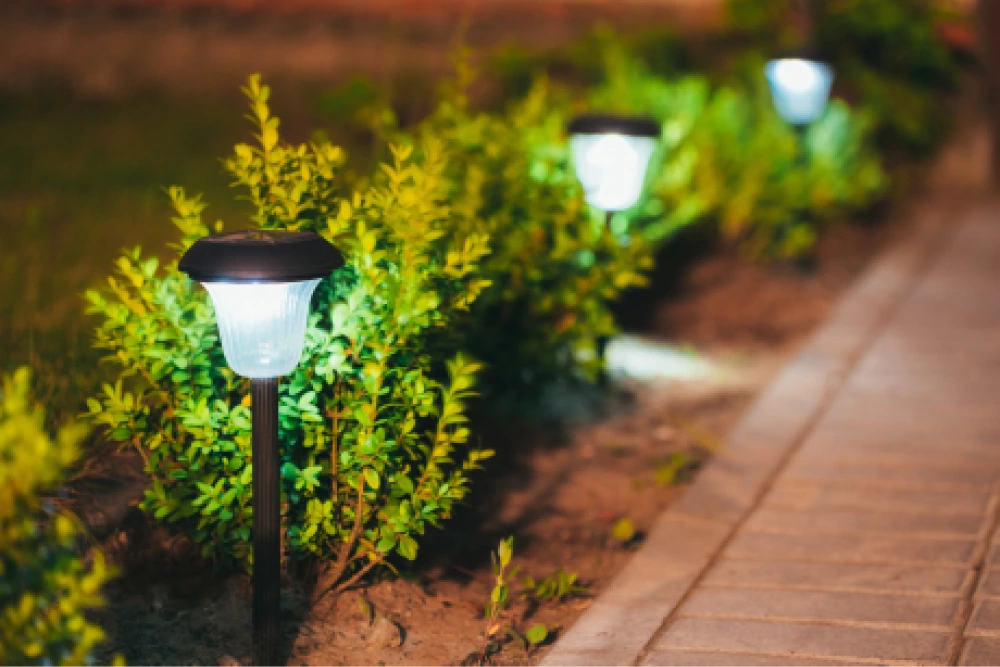Drought-Tolerant Plants for Texas Gardens
4 minute readGardening in Texas presents unique challenges. Long, hot summers and frequent droughts mean that traditional landscaping often requires significant water
Home > BKV Energy Blog > All Posts > What Is the Most Energy Efficient Light Bulb? (2025)
8 minute read • Last update January 2025

LED light bulbs stand out as the most energy-efficient option, using 75% less energy and lasting 25 times longer than traditional incandescent bulbs.
Tired of constantly replacing light bulbs and dealing with high energy bills? In this blog post, we’ll explore the world of energy-efficient light bulbs, comparing different types and how energy-efficient each option is. With this information, you can make informed decisions to optimize your home’s lighting and save on energy costs using the most efficient light bulb.
We’ll also discuss important energy efficiency metrics, factors to consider when choosing energy-efficient light bulbs, and some top recommendations in various categories, including the most efficient light bulb options. By the end of this post, you’ll be well-equipped to select the perfect energy-saving light bulbs for your home, reducing both energy consumption and environmental impact. So, let’s dive in and discover the best energy-efficient light bulbs for your needs, focusing on the most efficient light bulb choices.

When it comes to light bulbs, there are several options to choose from: LED, CFL, halogen, and incandescent bulbs. Each of these types has its own set of advantages and disadvantages in terms of energy efficiency and performance. However, LED bulbs are the most energy-efficient option, consuming 75% less energy and lasting 25 times longer than incandescent bulbs.
LED bulbs, or Light Emitting Diode bulbs, are the champions of energy efficiency. They have several advantages:
Apart from their energy efficiency, LED bulbs also offer incredible versatility in terms of color selection and compatibility with smart home systems. With a wide range of shapes and filament styles, LED bulbs can truly transform your living space, both in terms of aesthetics and energy savings.
Therefore, when it comes to top performers in energy-efficient light bulbs, LED bulbs easily take the lead in the world of led lighting.
Compact Fluorescent Light (CFL) bulbs, also known as compact fluorescent lamps, are another energy-efficient option, using less energy than incandescent bulbs and lasting longer than traditional incandescent bulbs. Although they are not as energy-efficient as LED bulbs, compact fluorescent light bulbs still offer significant energy savings, with an average lifespan of 8,000 hours.
One drawback of CFL bulbs is that they contain trace amounts of mercury, which can be harmful to the environment if not disposed of properly. However, with proper disposal and recycling practices, CFL bulbs can still be a more eco-friendly choice compared to incandescent bulbs.
Hence, if affordability is your priority in energy-saving light bulbs, CFLs present a practical alternative to LED bulbs.
Halogen bulbs are a step up from traditional incandescent bulbs in terms of energy efficiency. They offer the following benefits:
However, it is important to note that halogen bulbs are not as energy-efficient as LED or CFL bulbs.
Keep in mind that halogen bulbs:
Incandescent bulbs:
While incandescent bulbs may be a familiar choice for many households, it’s important to consider the long-term energy savings and environmental impact of switching to more energy-efficient light bulbs. A switch to LED or CFL bulbs can substantially cut down your energy use, reduce your utility bills, and support environmental sustainability.
To grasp the energy efficiency of light bulbs, you should acquaint yourself with this crucial metric: lumens per watt. Lumens per watt is a measure of a bulb’s brightness in relation to its energy consumption, with higher values indicating greater efficiency.
On the other hand, be on the look out for ENERGY STAR certification. This ensures that a light bulb meets strict energy efficiency guidelines set by the U.S. Environmental Protection Agency, helping you save energy and money.
Lumens per watt is an incredibly useful metric that compares the brightness of a light bulb to its energy consumption. A higher value indicates greater efficiency, so it’s a great way to measure how effective a light bulb is. For example, CFL bulbs have a range of 40 to 90 lumens per watt, while tungsten bulbs have a range of 12 to 15 lumens per watt. By comparing the lumens per watt of different types of bulbs, you can easily determine which bulbs offer the best energy efficiency for your needs.
When selecting energy-efficient light bulbs, it’s important to consider both the brightness (measured in lumens) and energy consumption (measured in watts) to ensure you choose a bulb that meets your lighting objectives while also conserving energy. By focusing on lumens per watt, you can make more informed decisions about which energy-efficient light bulbs are best suited for your home and lifestyle.

ENERGY STAR certification is a program developed by the U.S. Environmental Protection Agency (EPA) to identify and promote energy-efficient products and practices. Products that earn the ENERGY STAR label meet strict energy efficiency guidelines set by the EPA, ensuring that you get:
All while helping to conserve energy.
By choosing ENERGY STAR certified light bulbs, you can save money on utility bills and make a positive impact on the environment by reducing greenhouse gas emissions. When shopping for energy-efficient light bulbs, look for the ENERGY STAR label to ensure you’re selecting a product that meets the highest standards of energy efficiency and environmental protection.
When it comes to choosing energy-efficient light bulbs, there are several factors to consider, such as:
By taking these factors into account, you can ensure that you select the perfect energy-saving light bulb for your needs.
In the following sections, we’ll provide some tips and guidance to help you make the best choice.
Selecting the appropriate brightness and color temperature for different areas of your home is essential for optimizing energy efficiency and creating the desired ambiance. The Kelvin scale is used to measure the color temperature of light bulbs, helping you find the perfect light for any room.
For example, a kitchen may require a bright light with a cooler color temperature to motivate you to cook, while a living room may require a softer light with a warmer color temperature to create a cozy atmosphere.
By considering the purpose of the space and the activities that will take place there, you can choose the right brightness and color temperature for your energy-efficient light bulbs. This not only ensures optimal lighting for your needs but also helps you to make the most of your energy savings.
Another important factor to consider when selecting energy-efficient light bulbs is compatibility. Ensure the bulb is compatible with the fixture’s voltage rating, base, and spatial requirements for optimal results. To make sure the bulb you’re buying is the right fit for your light fixture, compare the base size with the old bulb to ensure compatibility.
It’s also important to account for the type of fixture in which the light bulb will be installed. For example, some bulbs may not be suitable for enclosed fixtures or outdoor use. By carefully selecting a compatible light bulb based on wattage rating, base size, and fixture type, you can optimize energy efficiency and ensure a long-lasting, high-performing light bulb for your home.
For further enhancing your energy savings with light bulbs, consider adopting several strategies and technologies, including the use of dimmable bulbs, motion sensors, and optimized outdoor lighting.
We will now offer some tips and guidance on leveraging these energy-saving features and technologies to their full potential.
One great way to save energy with light bulbs is to use dimmable bulbs and motion sensors. Dimmable bulbs allow you to adjust the brightness of your lighting, using less energy when a lower level of brightness is needed. To ensure the best performance and energy savings, it’s important to choose the right dimmer switch for your dimmable bulbs.
Motion sensors can also help you save energy by automatically turning lights on and off when movement is detected, ensuring that lights are only being used when necessary. By incorporating dimmable bulbs and motion sensors in your lighting setup, you can maximize energy savings and enjoy a more efficient, convenient lighting experience.
Maximizing energy savings with outdoor lighting involves using energy-efficient bulbs, such as LEDs or CFLs, as well as incorporating timers and motion sensors to control when lights are in use. By choosing energy-efficient outdoor lighting products that have earned the ENERGY STAR label, you can ensure that your outdoor lighting setup meets strict energy efficiency guidelines set by the U.S. Environmental Protection Agency.
In addition to using energy-efficient bulbs, consider installing timers to automatically turn lights on and off at specific times, further reducing energy consumption. Motion sensors can also be used for outdoor lighting, ensuring that lights are only activated when movement is detected.
Ultimately, the most energy efficient outdoor lighting is solar powered and isn’t connected to your home’s electricity at all.
By implementing these strategies, you can optimize your outdoor lighting for maximum energy savings and environmental benefits.

In conclusion, energy-efficient light bulbs are an excellent way to save energy, reduce your environmental impact, and lower your energy bills. LED bulbs are the most energy-efficient option, followed by CFLs, halogen bulbs, and incandescent bulbs. By understanding energy efficiency metrics, such as lumens per watt and ENERGY STAR certification, and considering factors like brightness, color temperature, compatibility, and fixture type, you can choose the perfect energy-saving light bulb for your needs.
By making informed choices and implementing energy-saving strategies, you can enjoy a more efficient, eco-friendly, and cost-effective lighting experience. Ready to start your journey towards energy efficiency today and switch to energy-saving light bulbs?
Texans can save up to $500 per year by choosing BKV Energy as their electricity provider. Enter your zip code below to explore plans in your area.
LED light bulbs are the most energy-efficient option available, offering 40-80 lumens per watt and providing a long-term cost savings for homeowners. Switching out all your light bulbs at once isn’t necessary; LED bulbs can be adopted gradually as needed.
LED lights are the most efficient and longest-lasting type of light bulb, offering up to 90% energy savings and lasting in some case up to 100,000 hours. This makes them an ideal choice for any home or business looking to reduce their energy costs and carbon footprint. LED lights are also incredibly versatile, available in a variety of shapes, sizes, and colors to suit any lighting need.
If you’re looking for energy-efficient lighting, the three main options available are halogen, compact fluorescent lamps (CFLs), and light-emitting diodes (LEDs). With these bulbs, you can save money on your electricity bills and help reduce your carbon footprint. Incandescent bulbs are the least energy efficient.
To determine the energy efficiency of a light bulb, check for its lumens per watt rating and ENERGY STAR certification.
When choosing an energy-efficient light bulb, consider brightness, color temperature, compatibility, and fixture type to ensure the best results. Brightness is measured in lumens, and the higher the lumens, the brighter the bulb. Color temperature is measured in Kelvin and is indicated by a number; the higher the number, the cooler the light.
Graham Lumley, Digital Marketing Manager at BKV Energy, leads digital and traditional marketing strategies, focusing on educating Texans about the state's deregulated energy market. With over 8 years of marketing experience, he creates content to help consumers understand and save on their energy bills, bringing a fresh and dynamic approach to the industry.

Gardening in Texas presents unique challenges. Long, hot summers and frequent droughts mean that traditional landscaping often requires significant water

How much can you save with a more energy efficient air conditioner?
Get $50 off your electric bill!
Use code BKVEJOINUS50
Enter your zip code to shop BKV Energy's affordable, fixed-rate Texas electricity plans. Use the promo code for $50 off your electric bill.